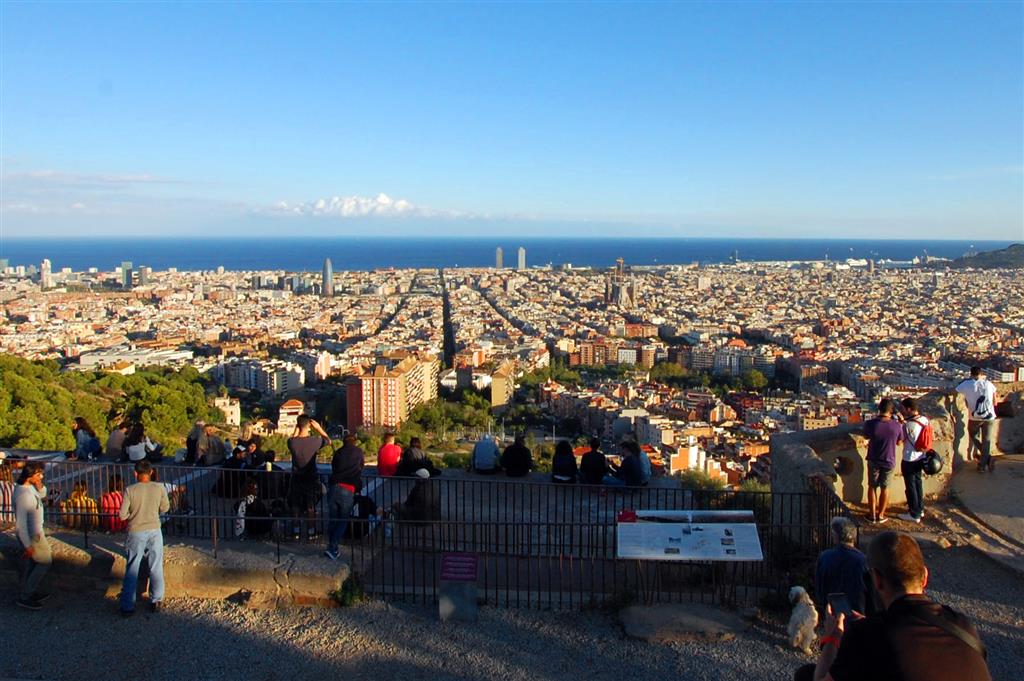Tourism and Urban Quality of Life: a complicated fit

Due to the COVID-19 pandemic, the summer scenes of many cities are very different from those that we usually see: deserted streets, empty bar terraces, and hotspots without the usual crowds of visitors. These are barely news at the gates of what is announced to be one of the worst (if not the worst) tourist season since the dawn of the Grand Tour. On the other hand, this sad reality (whose high economic and social cost has yet to be determined) has given rise to citizen initiatives demanding the city’s appropriation by residents.
For example, the action “Volem jugar” (We want to play) in Barcelona defends the recovery of a usually crowded public space (partly due to tourist pressure). This initiative aims at using this space for the children’s leisure. At the same time, the private sector is also trying to recover a more local audience with initiatives such as “Mengem-nos el Born” (Let’s Eat the Born). Similarly, the Tourist Bus promotes the “Barcelona Panoràmica” route, which is oriented to locals and commercialized under the slogan “Rediscover the City”. What these anecdotes highlight is a debate that has long transcended the academic field: tourism and quality of life in cities, how do they fit together?
"Tourist development in cities acts as a catalyst for positive impacts: the increase in cultural and leisure offerings, the generation of employment and economic benefits or the revaluation of cultural elements and local traditions"
Urban management itself faces numerous challenges already such as
constant demographic and urban growth, overcrowding of public services, climate
change, pollution and air quality, mobility, employment, security, and of
course, public health. In this context, tourism development can contribute
positively by helping to alleviate urban problems and making them more bearable.
But it can also contribute negatively by aggravating these same vulnerabilities
and worsening residents’ quality of life.
As far as its most positive side is concerned, tourist development in cities acts as a catalyst for positive impacts, including the increase in cultural and leisure offerings, the generation of employment and economic benefits on multiple scales or the revaluation of cultural elements and local traditions, among others. In fact, studies such as that of Rasoolimanesh, Ringle, Jaafar, and Ramayah (2017) show that residents of urban tourist destinations perceive these aspects more positively than the population in rural settings, which determines greater support for tourism development.
However, such development can also contribute to a degradation of the conditions and environment of urban populations. In this sense, a decrease in the environment’s habitability is equivalent to a loss of quality of life. In this regard, Aall and Koens (2019) list various drivers of social conflicts: the massification of public spaces and the excessive pressure on some services and infrastructures, the impact on the real estate market linked to the boom in tourist use of the urban housing stock, the processes of commercial gentrification linked to tourism and the decrease in services oriented to residents, as well as conflicts related to antisocial behavior of the tourists themselves. Therefore, social rejection made visible in cities such as Barcelona, Venice, Prague, Paris, or Amsterdam is linked to impacts that directly affect the local community’s capacity to satisfy their needs and that also reduce the liveability of the environment.
“Education is critical in providing professionals with a fresh and conscious gaze”
Without falling into an oversimplification of a phenomenon as diverse as it can be, it has been argued that the solution does not lie in a drastic reduction in tourist activity. Instead, urban tourism management should focus on vulnerabilities known to suffer from added pressure from tourism. These would include a possible pre-existing lack of infrastructure and services, or a housing deficit (Żemła, 2020). In this way, tourism management in cities moves further and further away from more specific models of resorts and other destinations, no longer focusing on attracting as many visitors as possible, but on managing resources and seeking a balance between costs and benefits.
In this paradigm shift, education is critical in providing professionals with a fresh and watchful gaze. The vision of the future tourism professionals must be inseparable from the need to contribute in all possible ways to the wellbeing of the destination in which it is implemented.
Aurélie Cerdan, researcher at the research group TURCiT at CETT-UB
References
Aall, C., & Koens, K. (2019). The discourse on sustainable urban tourism: The need for discussing more than overtourism. Sustainability (Switzerland), 11(15), 1–12. https://doi.org/10.3390/su11154228
Rasoolimanesh, S. M., Ringle, C. M., Jaafar, M., & Ramayah, T. (2017). Urban vs. rural destinations: Residents’ perceptions, community participation and support for tourism development. Tourism Management, 60, 147–158. https://doi.org/10.1016/j.tourman.2016.11.019
Żemła, M. (2020). Reasons and Consequences of Overtourism in Contemporary Cities—Knowledge Gaps and Future Research. Sustainability, 12(5), 1729. https://doi.org/10.3390/su12051729
Foto: Wikimedia Commons